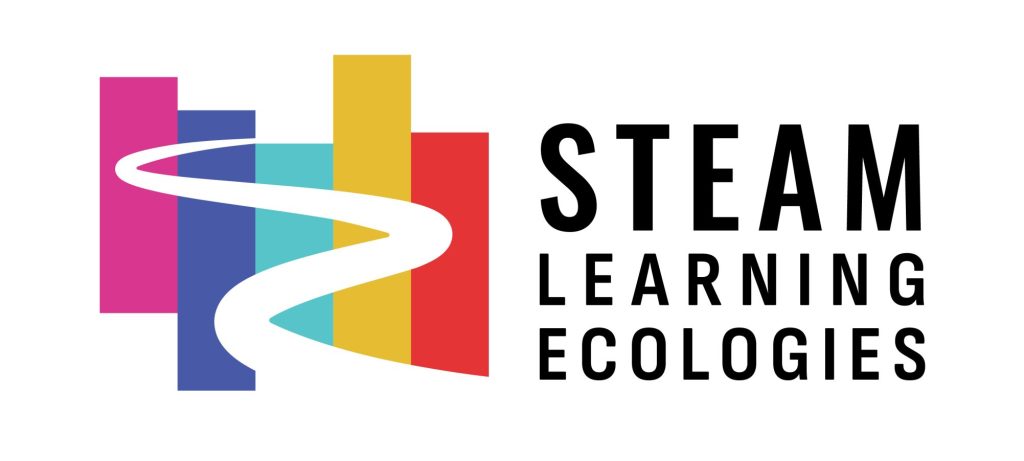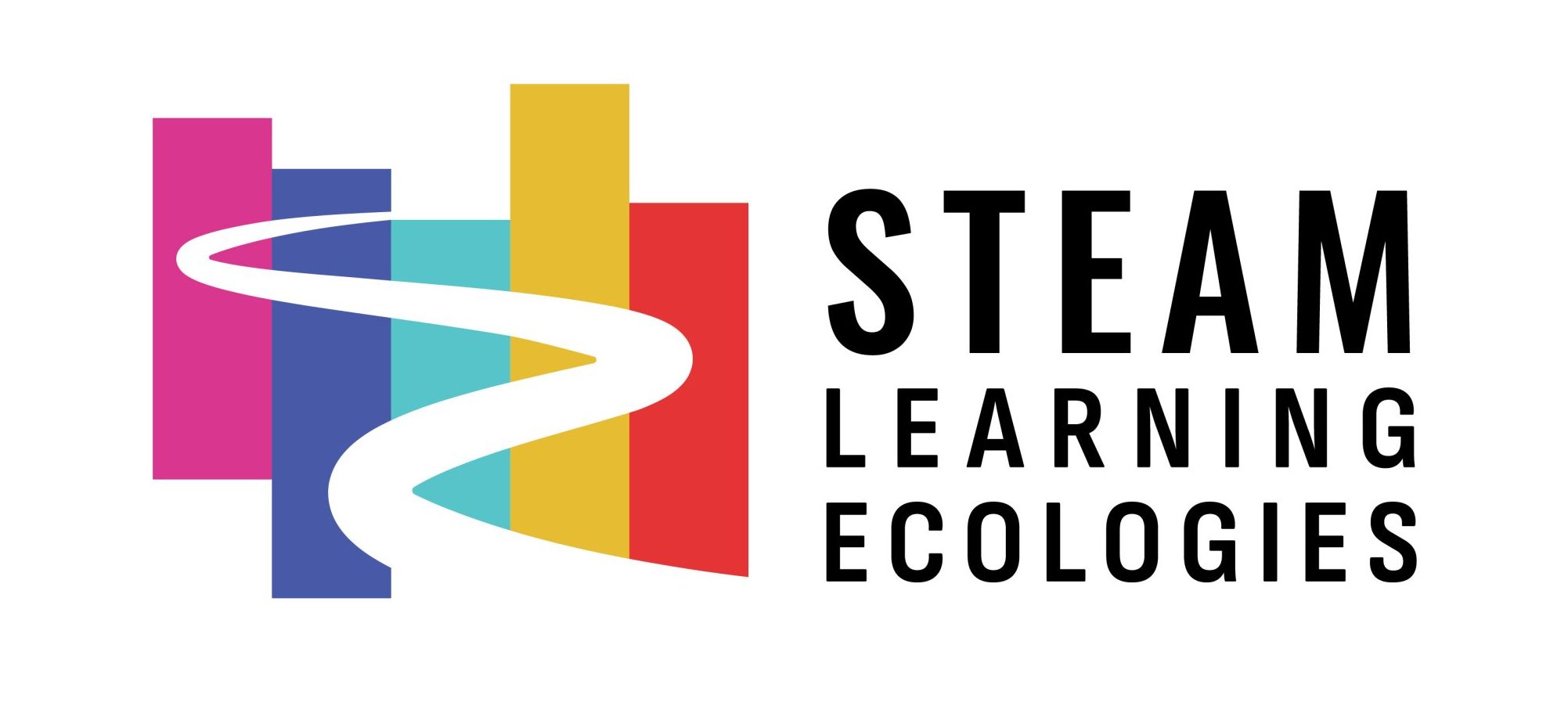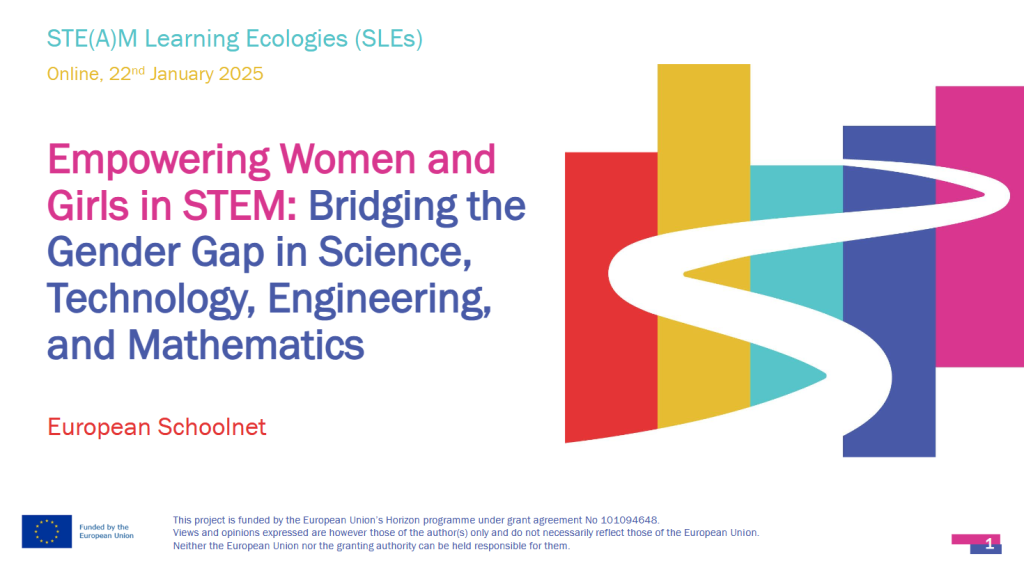On January 22nd, 2025, STE(A)M Learning Ecologies held its online event “Women and Girls in STEM: Bridging the Gender Gap in Science, Technology, Engineering, and Mathematics”. The event brought together experts and educators to discuss practical strategies and share initiatives that are making a difference in increasing female participation in STEM fields.
Opening the event Katalin Oborni, STREAM IT project coordinator, showcased key findings from research carried on the barriers to gender gap, available at this link. The STE(A)M Learning Ecology team then introduced the SLEs Toolkit “Empowering Women and Girls in STEM” , designed to help educators understand the factors contributing to the gender gap and implement effective solutions.
Following the Toolkit presentation, a roundtable of experts shared insights from their experiences. The roundtable welcomed Katarina Stekic, Expert Associate at the Center for Promotion of Science; Mario Muscat, Officer for Science within Malta’s Directorate for STEM & VET Programmes; and Letizia Jaccheri, Professor at the Department of Computer Science of the Norwegian University of Science and Technology. The discussion revealed several strategies to address the gender gap in STEM.
Key takeaways from the roundtable
Start from the why. Experts emphasized it’s important to first identify why the gap exists. Stereotypes, social expectations, women’s lack of knowledge on job opportunities, and male-oriented job advertisements are some significant challenges. Secondly, it’s important to understand why someone should care about the issue. Different stakeholders are interested in different whys, and finding the right one will determine whether they will help in developing a strategy. Somone’s why might be about achieving equal rights, some other about fostering the diversity of thoughts in STEM fields, or boosting the economy.
Confront gender stereotypes. One notable approach involves using tools like the Implicit Association Test to help both teachers and students recognize their unconscious biases. The Hypatia project showed success in deconstructing gender stereotypes in STEM education through games and debates. The experts also noted that, while teachers are crucial to the solution, they need to be made aware of their own implicit stereotypes through professional development.
Promote role models and peer support. Real world examples by all experts proved the importance of role models, as they provide an alternative narrative to often biased textbooks or to the lack of female role models in students’ families. Simply exposing videos featuring women in STEM careers significantly increases girls’ interest in these fields. Similarly, increasing the percentage of female faculty in university empowers more girls to pursue the same path. Peer mentoring is also a strategy that empowers younger students working with the older ones, to later pursue courses in robotics and IT.
Engage parents as partners. The event also showcased the crucial role of parents in nurturing students’ interest in STEM. A program in Malta currently running addresses parents’ knowledge gap by having teachers provide them with science concepts and experiments they could replicate at home, creating a supportive learning environment beyond the classroom.
Implement a whole-school approach. Long-term change requires both bottom-up and top-down strategies. While supporting individual teacher initiatives is important, institutional support from faculty leadership, headmasters and administration is equally necessary to sustain change in the long term. Providing teachers with systematic training opportunities can facilitate the implementation of activities that are gender neutral and allow both girls and boys to develop a genuine interest towards STEM. Similarly, administrations should focus on revising syllabi and textbooks with the same purpose.
Share your thoughts about the Toolkit and the Event by filling this form!
You can find the slides here.
Additional videos
Empowering Women and Girls in STEM
Why do girls and women still face barriers in STEM? Join our experts’ presentations and roundtable as we dive into the challenges, explore solutions, and discuss how we can bridge the gender gap in STEM education and careers!
Key speakers:
Katalin Oborni – Senior project manager at the HÉTFA Research Institute, holding a PhD in Sociology and an MA degree in Gender Studies. Current Project Coordinator of the STREAM IT project.
Mario Muscat – Education Officer (Science) Directorate for STEM & VET Programmes (DSVP) Ministry for Education, Sport, Youth, Research and Innovation – Malta.
Katarina Stekic – Expert Associate at the Center for the Promotion of Science and a Research Associate at the Faculty of Philosophy in Belgrade
Letizia Jaccheri – Professor at the Department of Computer Science of the Norwegian University of Science and Technology. Former Head of department.
Want to learn more on existent strategies and resources to bridge the gender gap in STEM? Discover our toolkit here!
You can watch the video to learn more here.
SLEs Toolkit presentation – Empowering Women and Girls in STEM
Empower the next generation of women in STEM! Discover how the SLEs Toolkit equips educators with strategies and ideas to inspire and support girls in pursuing STEM studies and careers.
Speakers
Ioana Caraghiozov – project officer at European Schoolnet
Edlyn Vergara – Project Coordination Intern at European Schoolnet
Discover our toolkit here!
You can watch the video to learn more here.
Additional links and resources
SLEs Toolkit “Empowering Women and Girls in STEM”
Hypatia project – deconstructing gender stereotypes
EUGAIN project – Making STEM meaningful for girls through research-based strategies
IDUN project – mentoring and role models in higher education




